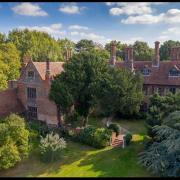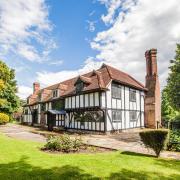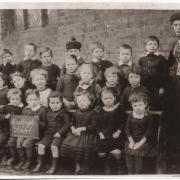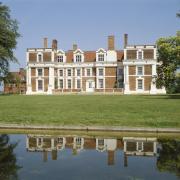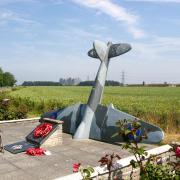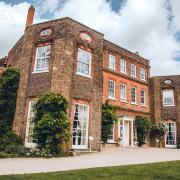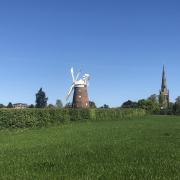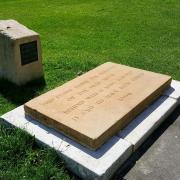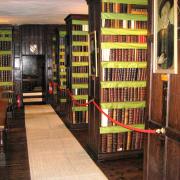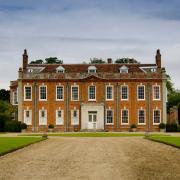Eccentric owners, philanthropy and blood-thirsty monks, Prittlewell Priory has many stories to tell, as Sybilla Hart finds out
Prittlewell Priory is the oldest continuously occupied building in Southend-on-Sea. Originally home to a Cluniac order of monks from St Pancras in Lewes, East Sussex, who founded the priory around 11AD, the history of this Grade I listed building spans more than 900 years.
As it was a small priory housing only 18 monks, Prittlewell’s income was small, around £150, which in turn meant that it was earmarked as one of the first to be closed by the order of King Henry VIII. Such was the fate of many priories, Prittlewell was largely destroyed during the Dissolution of the Monasteries, save for the priory chamber, cellar, refectory, fish ponds and a 12th century doorway complete with an original dog tooth ornamentation.
In 1537, a year after the Dissolution, the monastery passed into private hands. Little of the original priory remains, today there is a large Victorian addition, which houses much of the museum run by Southend Council today.

It was R. A. Jones the jeweller who gifted Prittlewell Priory and the grounds, Priory Park, to the council in the 1920s. Prittlewell Priory was the very first museum in Southend-on-Sea. Four centuries before, the priory was purchased by Henry VIII’s Lord Chancellor, Thomas Audley, for the sum of £400. A decade later Audley sold the priory to Lord Rich for double the price.
Once again, the names Audley and Rich are associated with the county’s religious houses following the Dissolution of the Monasteries. As we learnt last month upon exploring the history of nearby Hadleigh Castle (also in the ownership of Rich for a period following the Dissolution), the priory of Prittlewell tells a similar tale. Rich tore down some buildings that were not of use to him and sold off some of the masonry at the priory – something he also did at Hadleigh Castle. Before masonry was used, the priory would have been a timber-framed construction, and as the years went by the buildings would have been extended using Kentish rag stone and flint among other masonry.

Prittlewell was home to various families before the Scrattons moved in during the late-17th century. The 19th century Scratton family features heavily in today’s museum. The Scratton children were animal lovers and lived at Prittlewell with a menagerie of donkeys, dogs and rabbits. The children composed a charming newsletter that they named The Priory Times, full of their domestic adventures. One can imagine hearing their laughter and zeal ricocheting around the pretty gardens by the sea.
The Scrattons eventually relocated to a large manor house in West Ogwell in Devon and sold the Priory along with 22 acres to R. A. Jones in 1917. Though Jones was not born in Southend, he went on to become one of the town’s most important benefactors. When Jones presented Prittlewell to the town he said, ‘I think it is a sin for a man to die rich, it is a great privilege to me to be able to do this, for I believe strongly in facilities for recreation. There will now be no need for such an out of the way and costly park as Belfairs. Prittlewell, with its historic and old-world associations, its beautiful trees and lakes, and its nearness to the centre of town, is an ideal place. Part of the building would be suitable for a museum, and there would also be refreshment room accommodation, while the grounds would provide facilities for cricket, football, tennis, hockey and other sports. I propose that the name of the park should be Priory Park.’

Back in the 11th century, the monks who resided at Prittlewell Priory followed the Benedictine order, which would have involved being silent by and large. It has been suggested that the monks used a rudimentary form of sign language to communicate. As Laura from the historical website For the Love of History explains, ‘The Monks were of the Cluniac order under the Priory of St Pancras at Lewes, Sussex and worshipped under the rule of St Benedict. Their existence was to live in prayer, poverty and obedience. The Cluniac order was founded at the Abbey of Cluny in Burgundy in 910 by William of Aquitaine and was one of the most influential in Europe. Priories such as the one at Lewes and Prittlewell were classed as daughter houses and depended on Cluny for support. As Prittlewell was the daughter house of St Pancras Priory, Lewes, its priors would always come from there.’

The prior was sent to Essex from Sussex to oversee Prittlewell, and for the most part the community of monks lived peacefully until the 14th century when one prior, William de Auvergnat, was said to have indulged in some inappropriate behaviour on a trip to London. When he would not resign his position, some monks from Sussex took matters into their own hands and went to Prittlewell to topple him. Topple him they did, and unfortunately William died, quite possibly from the injuries inflicted.
What a privilege it is to visit Prittlewell and this site spanning half a millennium of history. From blood-spilling monks to eccentric aristocratic owners and philanthropy at its finest, Prittlewell Priory has seen it all!
southendmuseums.co.uk/prittlewell-priory
You may also like Essex almshouses: https://www.greatbritishlife.co.uk/lifestyle/heritage/secrets-of-essex-almshouses-9096324





